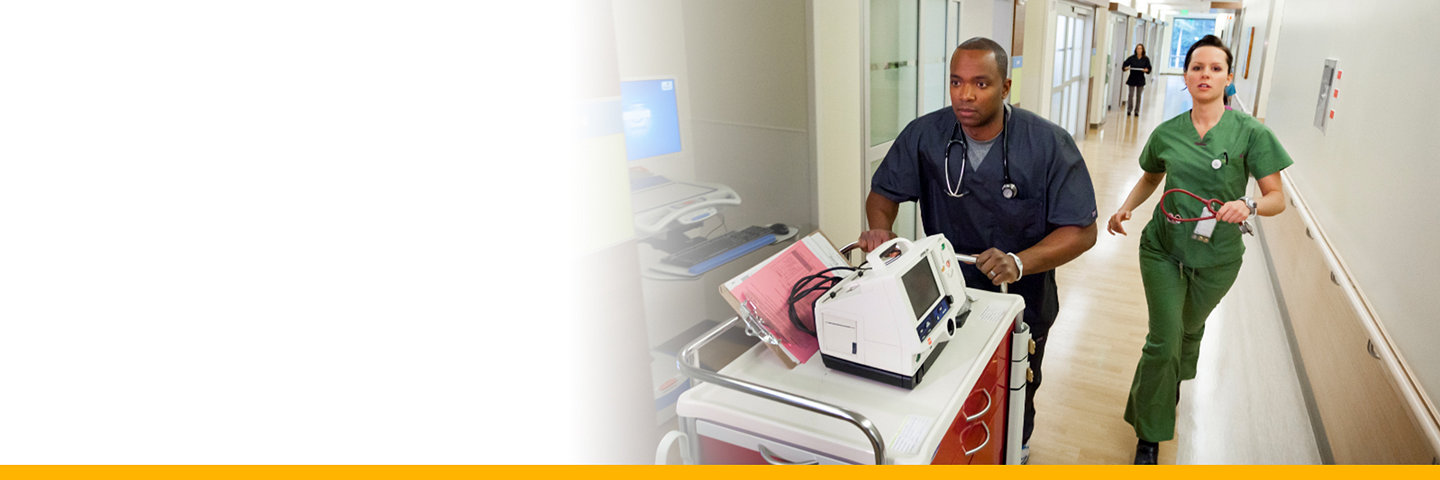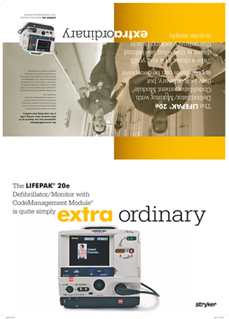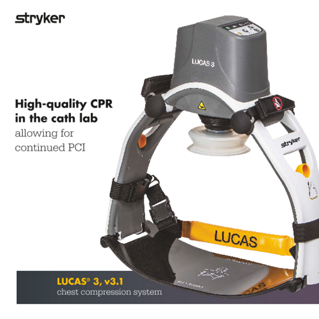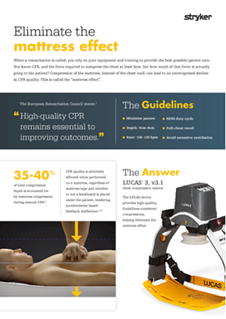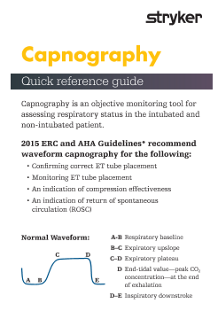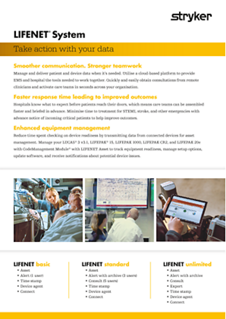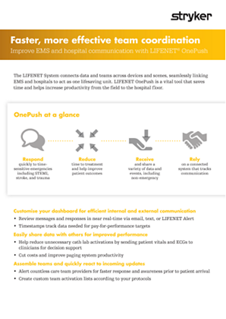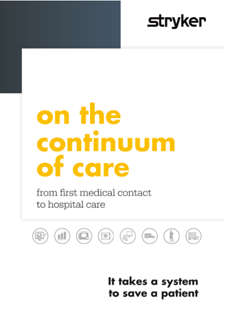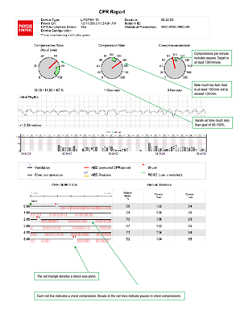is quite simply
extra ordinary
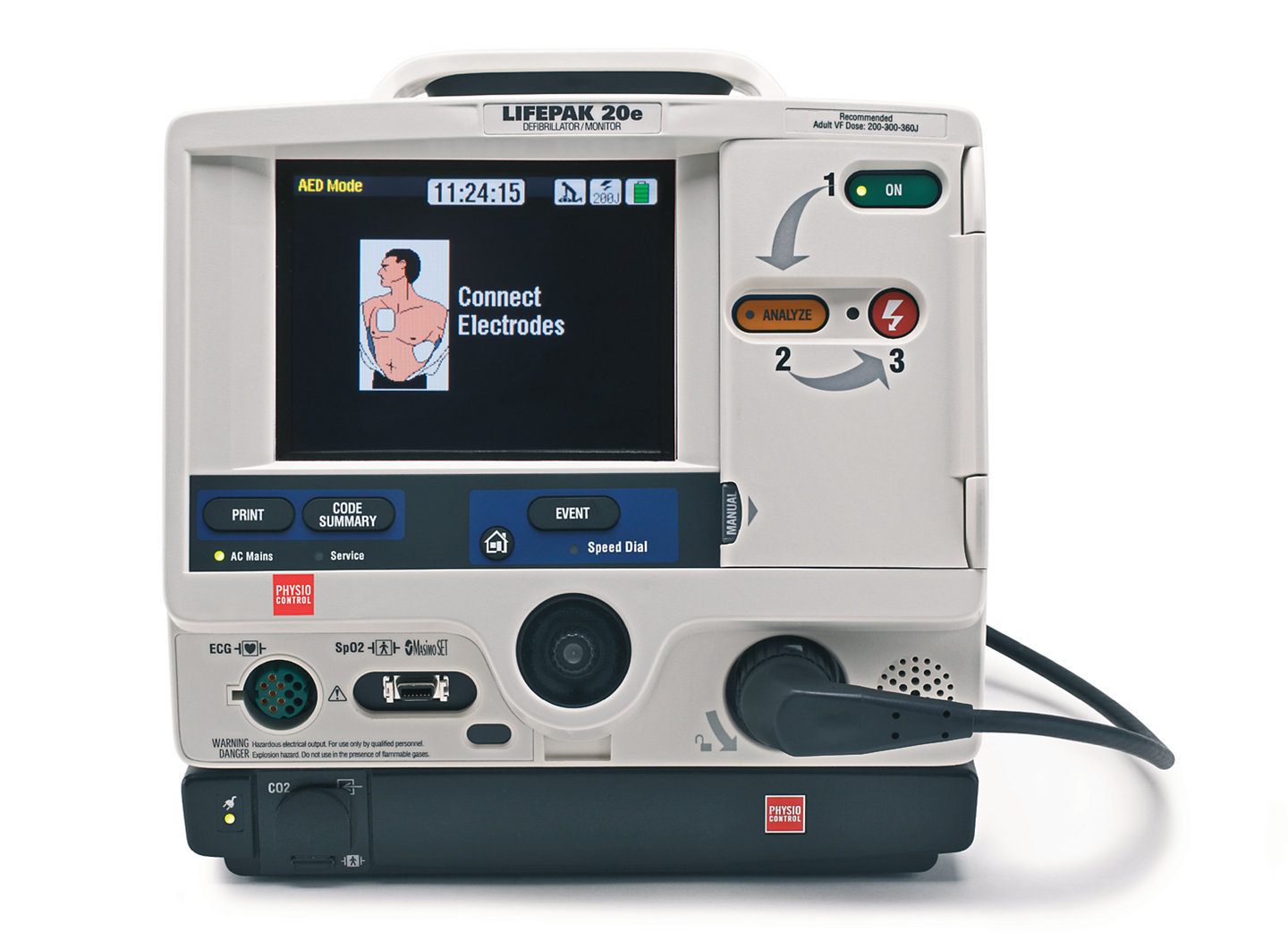
The LIFEPAK 20e defibrillator/monitor with CodeManagement Module wirelessly transmits device data for readiness—the visibility, insight and control allow your people and equipment to be prepared, so your hospital has the resources to better handle a resuscitation wherever and whenever it occurs.
The CodeManagement Module with CODE-STAT Data Review Software enables you to easily collect and review post-event data for quality improvement, providing your trained staff valuable information to help reduce risk and drive improved lifesaving performance.
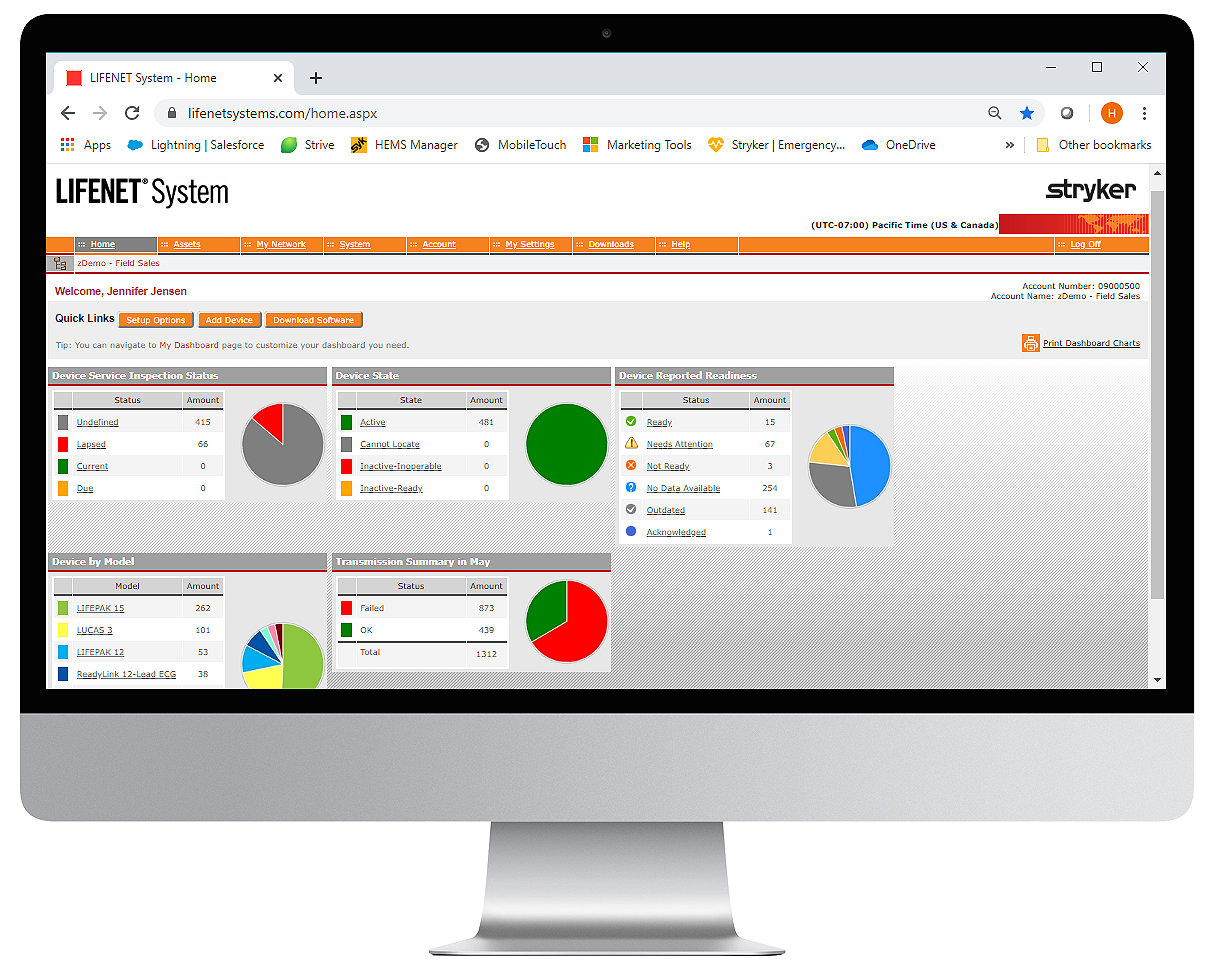

Clear and standardized user interface across the LIFEPAK range— without complicated soft keys or nested sub-menus—helps streamline training and speed event reactions.
1-2-3 step AED mode with intuitive door system allows the BLS team to provide defibrillation in advance of the ALS team arrival on scene.
Standardized and clear user interface, so teams who also use the LIFEPAK 12 and LIFEPAK 15 devices will recognize it immediately.
Capnography is an important indication of CPR effectiveness as EtCO2 values generated during CPR have been found to be statistically associated with chest compression depth and ventilation rate.
The LIFEPAK 20e with CodeManagement Module is equipped with EtCO2 monitoring which measures and records EtCO2, respiratory rate and the capnography waveform.
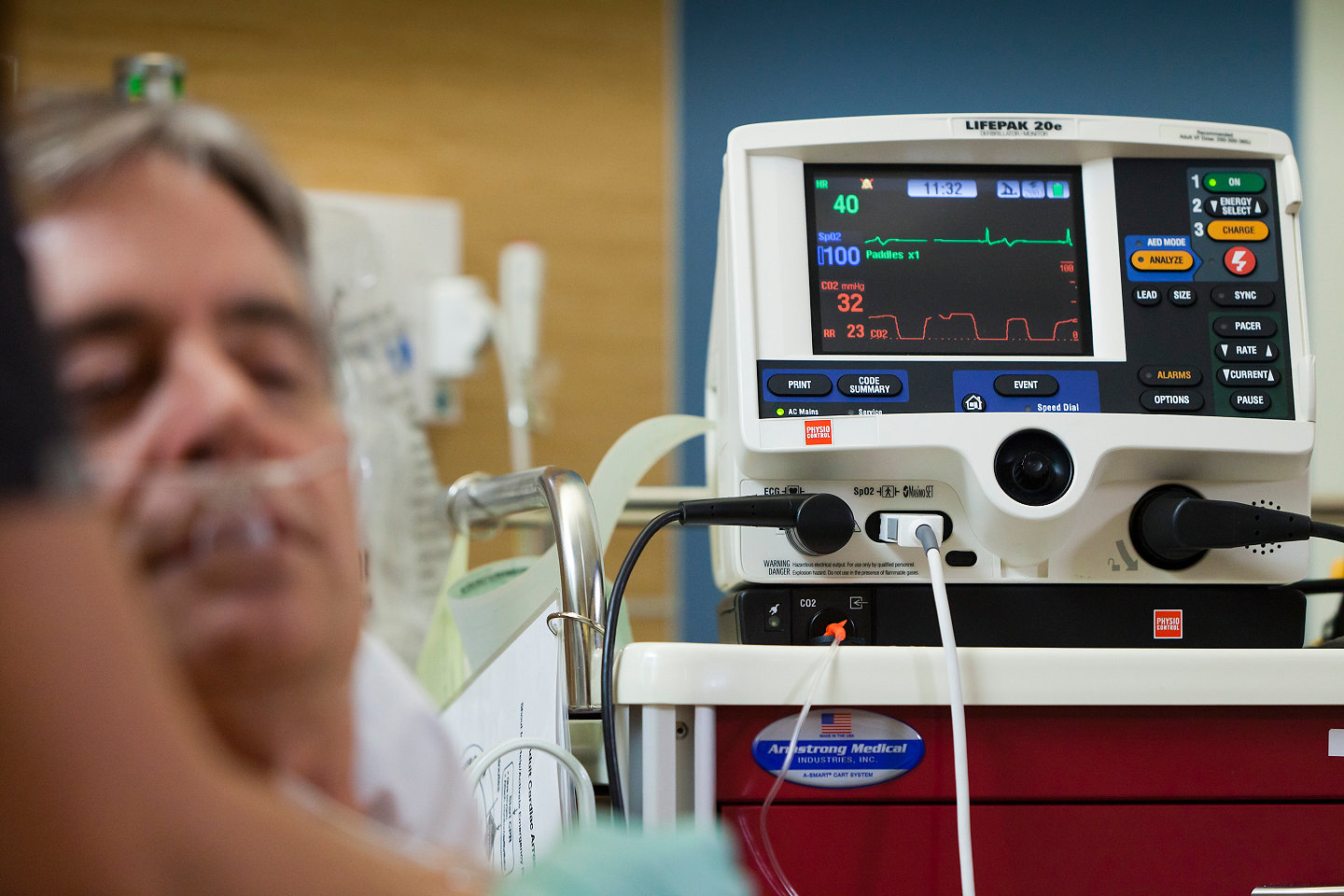
Mechanical CPR
The European Resuscitation Council states:
“High quality CPR remains essential to improving outcomes”1
The LUCAS® 3 version 3.1 Chest Compression system delivers guideline-consistent, high-quality chest compressions which allows you and your team to work more efficiently and safely.

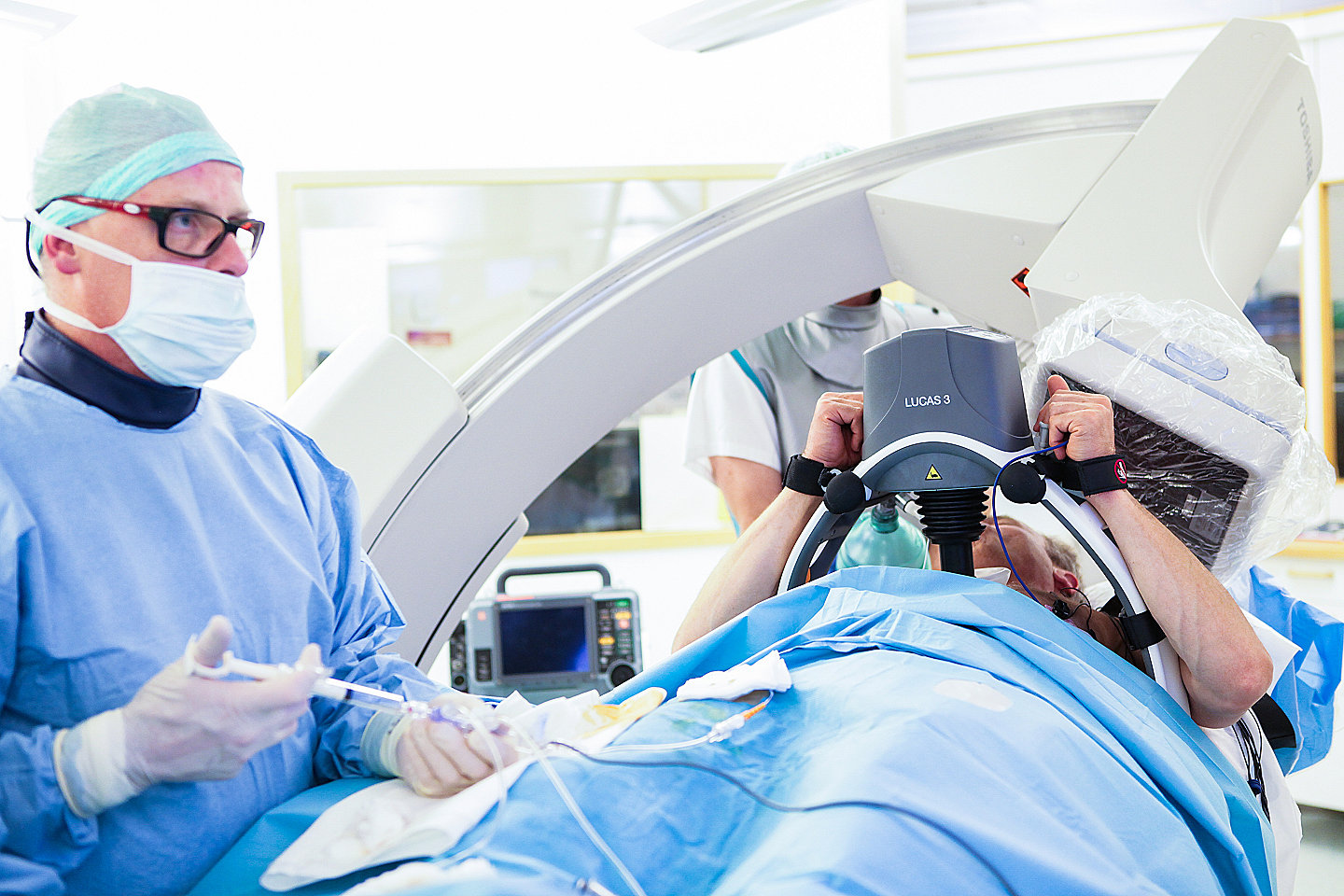
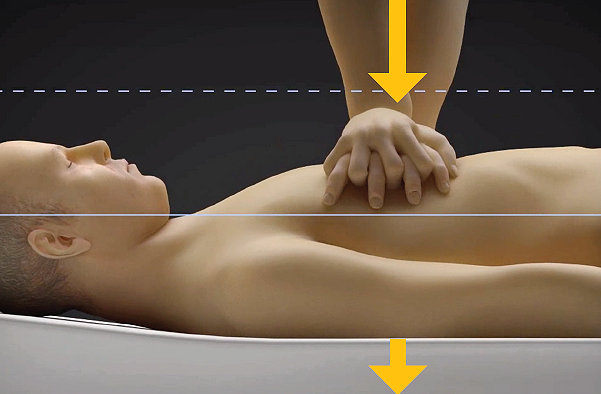
Transport
Some cardiac arrest patients will not respond to CPR and defibrillation alone. LUCAS allows for life-saving interventions (such as PCI and ECMO/ECPR) by providing consistent compressions on the way to and during these advanced life-saving therapies.
Safety
In the case of a refractory cardiac arrest in the cath lab, where the patient lays on the PCI-table surrounded by X-ray equipment, high-quality CPR is nearly impossible, Additionally, the CPR provider may be exposed to dangerous radiation. Early transition to LUCAS allows for continued and potentially life-saving PCI intervention.
Quality of CPR
Delivery of high-quality CPR is vital for patient outcomes. When providing CPR on a patient laying on a hospital bed, the mattress receives a large share of the compression instead of the patient. This results in too shallow, less effective manual compressions.1 With its support structure and back plate, LUCAS overcomes the “Mattress Effect” and provides high-quality CPR whatever the surface.
- Ref: European Resuscitation Council Guidelines for Resuscitation 2015, Resuscitation. 2015;95:2
- Stiell I, Walker R, Nesbitt L, et al. Biphasic trial a randomized comparison of fixed lower versus escalating higher energy levels for defibrillation in out-of hospital cardiac arrest. Circulation. 2007;115:1511-1517.
GDR 3344464_A.

